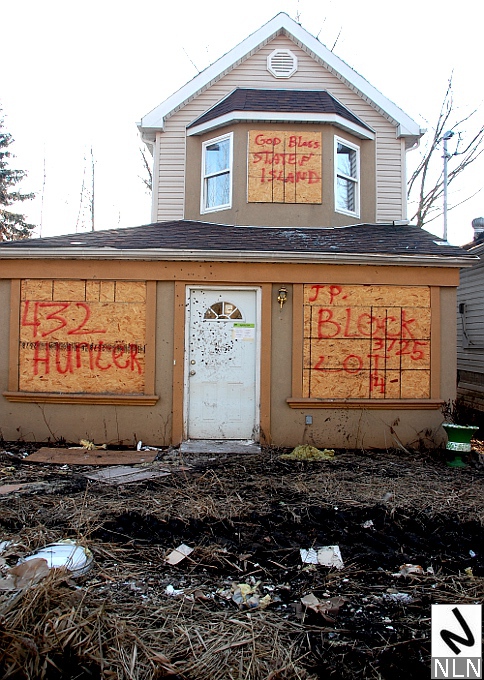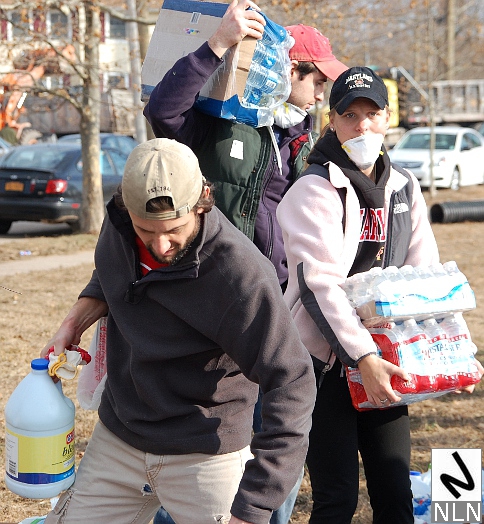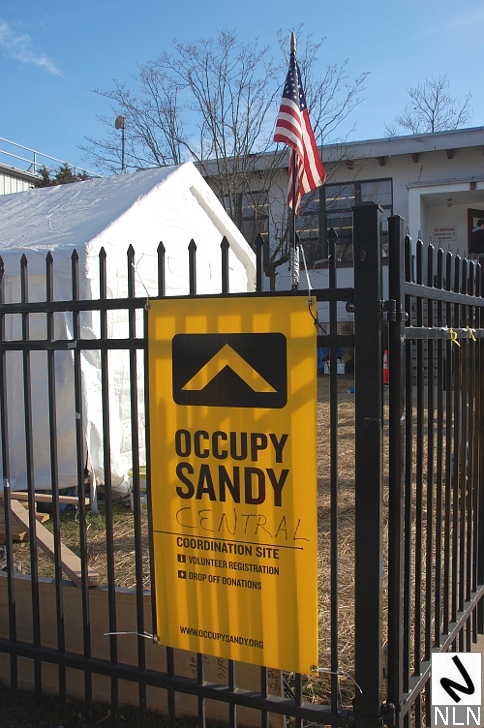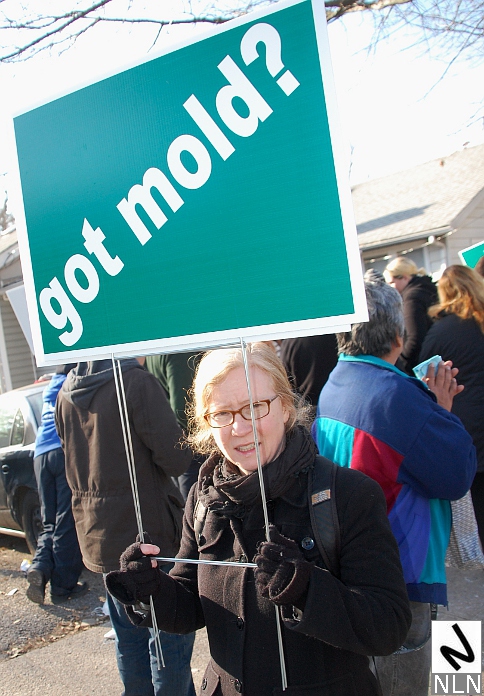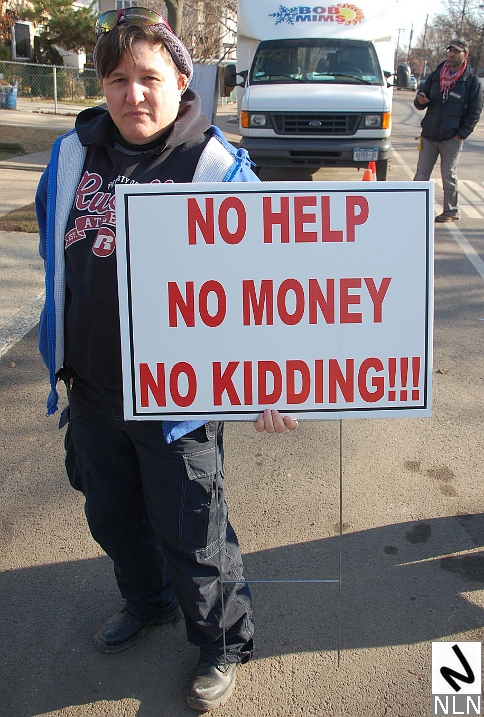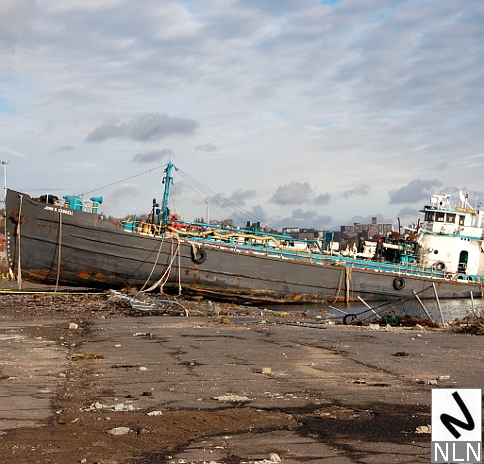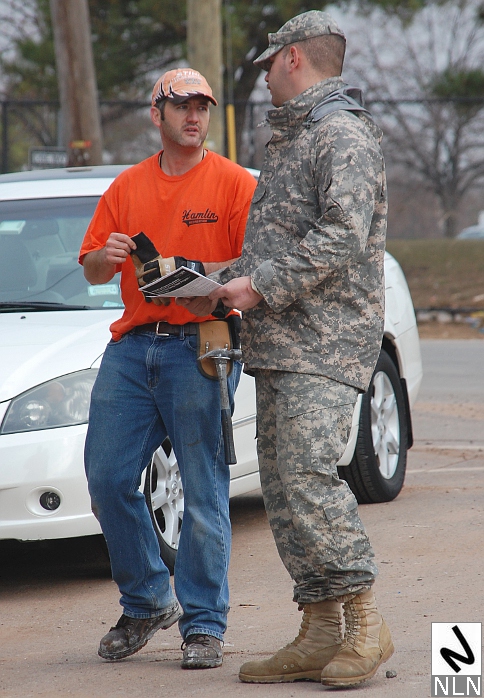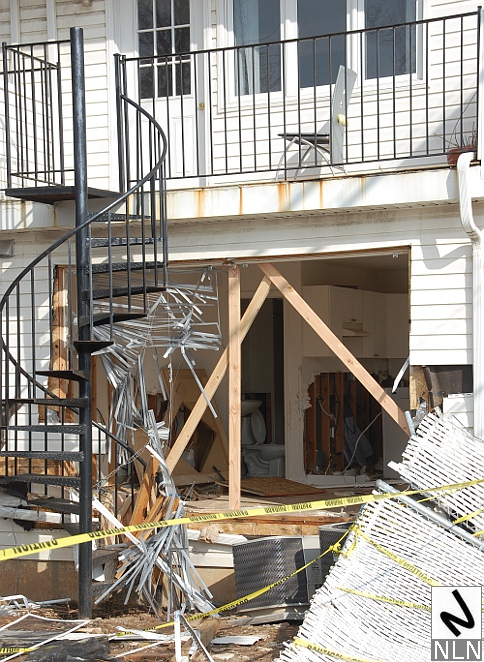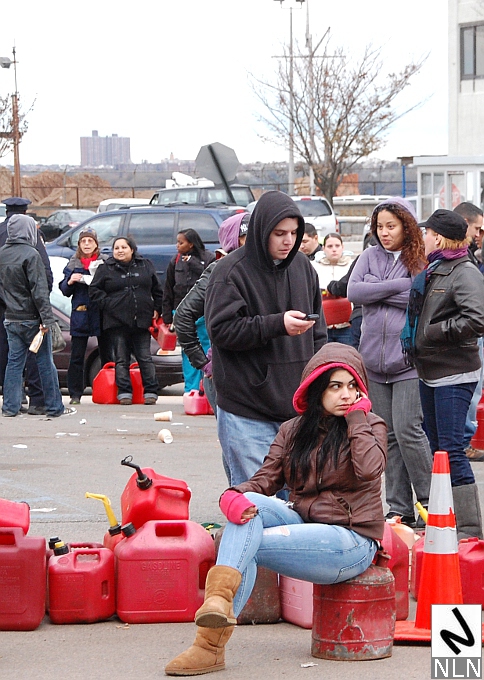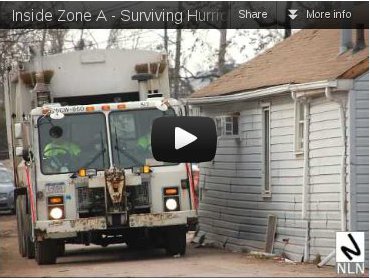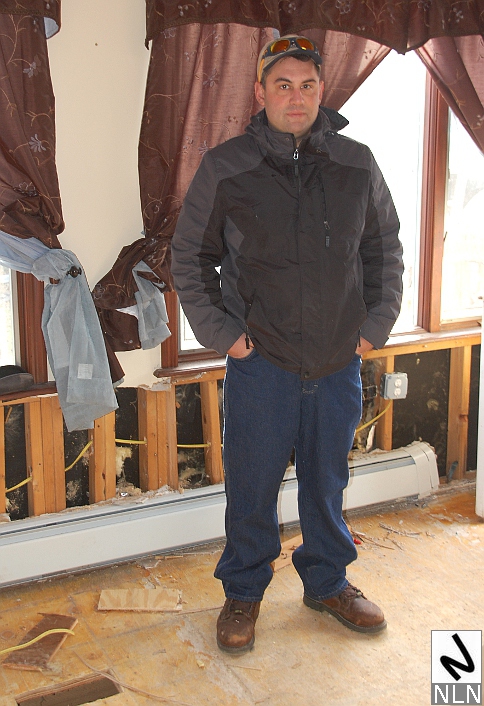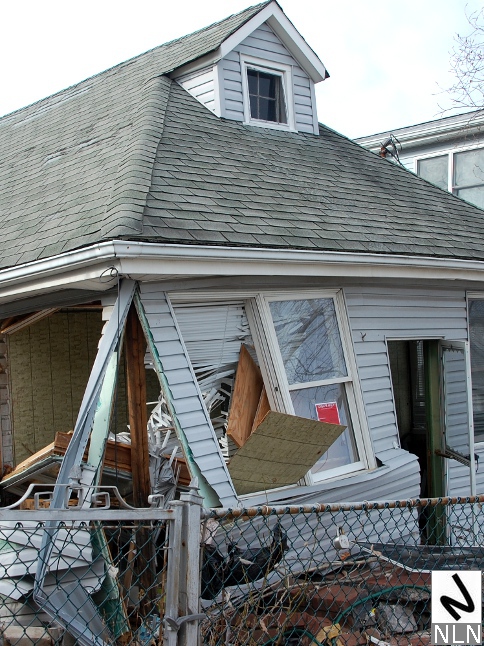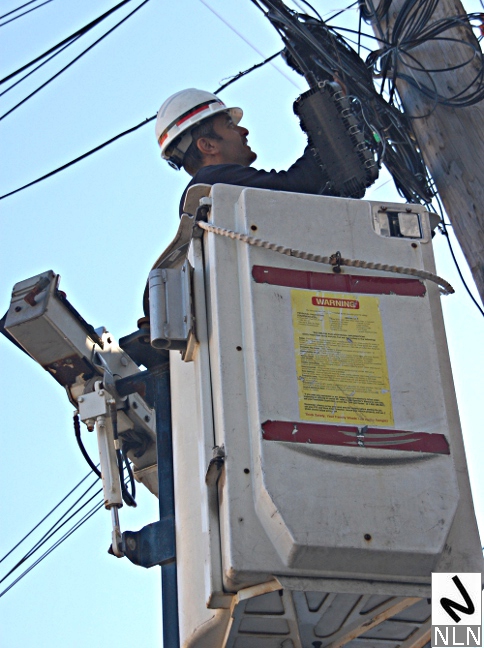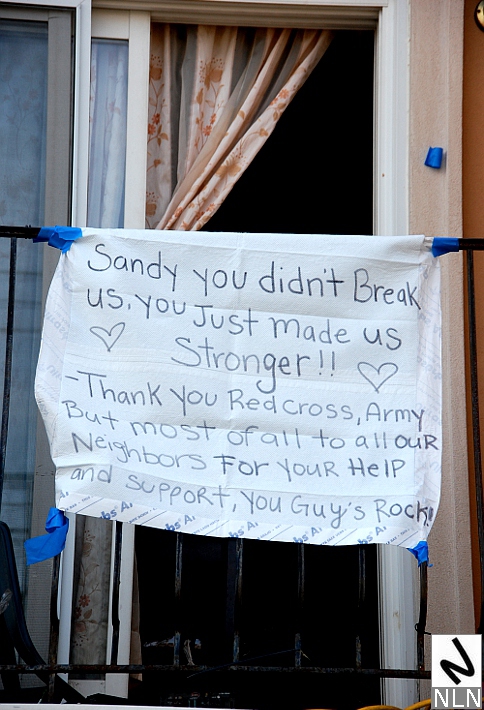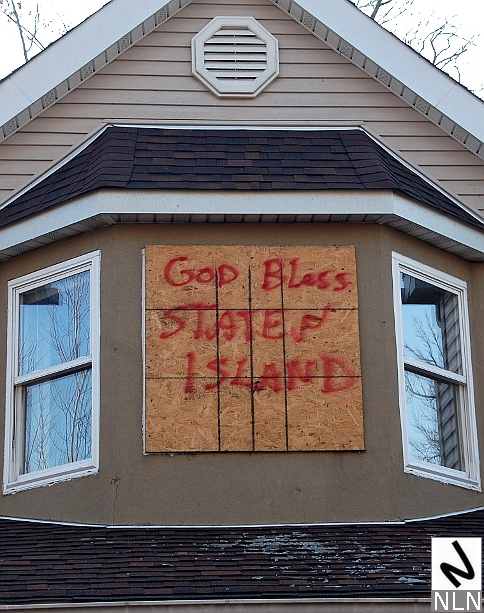Commentary on Otto Kernberg’s Ideology, Conflict and Leadership in Groups and Organizations (1998)
by Thomas Altfather Good
for the Rest of Us
|
“Künstliche Massen” — Photo: Thomas Altfather Good |
PREFACE
This impressive book from 1998 might better be titled The Mass Psychology of Authoritarianism: In Groups Large and Small. The work, Otto F. Kernberg’s single and singular foray into social theory, is a masterpiece of Freudian analysis of Mass Psychology. A number of core concepts are borrowed from other thinkers, most from the Object Relations school, but it doesn’t read like a patchwork effort. Kernberg ties it all together and expands on the synthesis in a narrative that flows well despite being full of Freudian terminology. In addition to the jargon (appropriate given the target audience) Kernberg coins some neologisms that encapsulate pathology in an almost poetic manner, not unlike Herbert Marcuse. And that’s a selling point: if you like the work of the Frankfurt School, in particular Herbert Marcuse and Theodor Adorno, you will probably enjoy this book. It expands on Adorno’s theory of the Authoritarian Personality and offers an understated tie-in to Marcuse’s Eros and Civilization. In a brief passage dealing with Eros, Kernberg argues for a workplace that leaves room for the presence of Eros (‘sublimated love’) – for the sake of creativity and fulfillment of human needs. It is precisely that humanistic perspective that makes the book, which covers a somewhat dry topic, live and breathe.
If the book has a failing it lies in the fact that it is made up of a collection of articles from a variety of professional journals. Despite some judicious editing by Kernberg there are some redundancies. This isn’t a fatal flaw as some of the arguments that appear in different forms in the various chapters are key concepts and a bit of repetition helps with the digestion of some complex ideas.
It is worth noting that the book ends as a general text at the end of Chapter 11, the final chapter of Part Three. Part Four (“Applications to Psychoanalytic Education”) is specific to psychoanalytic educational institutions. Nonetheless I read the section carefully and am none the worse for the experience. In Chapter 14 , (entitled “Thirty Ways to Destroy the Creativity of Psychoanalytic Candidates”) Kernberg displays a bit of edge and a sardonic sense of humor . The book concludes with Part Five – “Ideology, Morality, and the Political Process.” This section should be of interest to social theorists. The first chapter in Part Five, entitled “The Temptations of Conventionality” is brilliant and a delight for fans of the Frankfurter Schule. Kernberg discusses Theodor Adorno and Max Horkheimer’s theories on Mass Culture (what Adorno called “The Culture Industry”) and concurs with their findings. He also discusses, albeit briefly, the theories of Wilhelm Reich and Herbert Marcuse. It feels as though this chapter is a bonus track on a CD as simply appears out of thin air – but is truly a gem. It is followed by a chapter on “Ideology and Bureaucracy as Social Defenses Against Aggression” which is as close as Kernberg comes to a comprehensive summary of the main ideas he’s presenting. It’s good but oddly precedes the final chapter – a discussion of psychopathology in mainstream political campaigns. Overall Parts Four and Five don’t add much to the core ideas that appear, in various forms, in the bulk of the book. It is the central themes that I will discuss here as Kernberg’s analysis of dysfunction in organizations, large and small, is not only remarkably deft and accurate but something that really needs to be read by as many people of conscience as possible.
I will close this section by noting that Kernberg’s Ideology has secured a place in my top ten list of all time favorite books. It sits, extensively annotated and dogearred, on a shelf next to some classics in social psychology:
|
The list, sorted alphabetically, gives an idea of my perspective on matters sociological (which profoundly influences my take on Kernberg) and what I think of “Ideology, Conflict, and Leadership in Groups and Organizations.”
INTRODUCTION
|
A brief bio – from Wikipedia:
Otto Friedmann Kernberg (born 10 September 1928) is a psychoanalyst and professor of psychiatry at Weill Cornell Medical College. He is most widely known for his psychoanalytic theories on borderline personality organization and narcissistic pathology. In addition, his work has been central in integrating postwar ego psychology (which was primarily developed in the United States and the United Kingdom) with Kleinian and other object relations perspectives (which was developed primarily in the United Kingdom and South America). His integrative writings were central to the development of modern object relations, a theory of mind that is perhaps the theory most widely accepted among modern psychoanalysts. |
This discusion of Kernberg’s work won’t feature much critical commentary and I don’t give a letter grade at the end of my ‘review’. The purpose of this piece is to attempt to present Kernberg’s theory of mass psychology in a concise, linear manner, in the hope it will inspire others to read the book itself. Unless otherwise noted all double quoted sections are the words of Otto F. Kernberg.
***
MASS PSYCHOLOGY
According to Kernberg, subordinate members of a group or organization feel relieved of responsibility by PROJECTING THEIR EGO IDEAL (superego) onto the group leader. In the case of the unstructured group, e.g. a mob, this allows the group to “follow the idealized leader of the mob blindly, as described by Freud”, which “reconstitutes a sort of identity by identification with the leader, protects the individual from intragroup aggression by this common identity and the shared projection of aggression to external enemies, and gratifies dependency needs through submission to the leader.” The same phenomenon occurs in structured groups because, according to Kernberg, regression is inherent in the group process, the mob being the most exaggerated form. [1]
|
The social value of the individual is measured primarily in terms of standardized skills and qualities of adjustment rather than autonomous judgment and personal responsibility. — Herbert Marcuse, Eros and Civilization |
In any group the phenomenon of ‘activated mass psychology’ – projection of the ego ideal – grants the leader quite a bit of power over the group and its members. This is not always a good thing because idealization corrupts its object: “When socially determined excess of power is vested in the leadership, or a historically determined excessive power vested in the leadership transforms functional authority into authoritarian power, the conditions are ripe for misuse of such power in the discharge of surplus aggression, which can have a paranoiagenic effect.” [2]
SURPLUS AGGRESSION is a concept reminiscent of Marcuse’s ideas on Surplus Repression and Repressive Desublimation. ‘Paranoiagenic’ here refers to the theories of Elliott Jacques, adapted by Kernberg. Jacques (1976) described two types of organizations: REQUISITE (where authority and accountability are matched) and paranoiagenic. PARANOIAGENESIS is an organizational process (of regression) characterized by fear, mistrust and hyper-alertness. It results from the development of an unsound administrative structure. According to A. Kenneth Rice, regressive group processes triggered by unsound authoritarian structures or leadership produce an “institutional paranoid group” reaction – and staff become fearful of “turncoats” in their ranks as well as distrustful of leadership. This is not conducive to productivity, let alone creativity.
Kernberg, modifying Jacques’ ideas slightly, argues that leaders and administrative structures can be either FUNCTIONAL or AUTHORITARIAN. Authoritarian structures tend to abuse their power, discharging ‘surplus aggression’ and indulging their ‘BUREAUCRATIC SADISM’. Often the idealized, authoritarian, leader remains in control because it is not recognized that the problems generated by authoritarian actions and environments originate with the leader: “The leader whose unconscious sadism is expressed in contention among subordinates, by contrast, tends to be protected for a long time from being recognized as the true locus of origin of the conflicts.” [3]
Even when an authoritarian structure appears benign, the leader imbues followers with a group IDEOLOGY that often reduces thought to cliche and demands conformity. What’s more the benign structure is not necessarily static: “the ever-present dangers of ideological regression and bureaucratic sadism cannot be overestimated.” [4]
Kernberg’s group theory builds on the work of Wilfred Bion, who theorized that most groups fall into three categories of ‘basic-assumptions’: ‘pairing’, ‘dependency’ or ‘fight-flight’. Kernberg zeroes in on the last two.
Kernberg argues that dependency based basic-assumption groups seek a calming, narcissistic, reassuring mediocrity for a leader, what psychoanalysts Didier Anzieu and Janine Chasseguet-Smirgel described as a pseudopaternal “MERCHANT OF ILLUSIONS” — a vendor of ideology composed of “conventional cliches” (Kernberg). According to Kernberg: “primitive idealization, projected omnipotence, denial, envy, and greed, together with their accompanying defenses, characterize the basic dependency group. […] These groups are conventional, ideologically simplistic, conformist, and able to indulge themselves without guilt or gratitude; they lack a sense of personal responsibility or a deep investment in others.” [5]
Describing the paranoid mindset of the fight-flight group, Kernberg states that “The second basic-assumptions group operates under a “fight-flight” assumption, united against what it vaguely perceives to be external enemies. This group expects the leader to direct the fight against such enemies and also to protect the group from infighting..splitting, projection of aggression, and projective identification prevail [as characteristic defense mechanisms].” [6]
The dependency group can become a fight-flight group if conditions are right – group regression often triggers regression in the leader (prompting a “sudden exertion of authority” – authoritarian acts) which can contribute to an paranoiagenic, environment in which the fight-flight group can flourish.
A key concept in Kernberg’s theory is that (both group and individual) regression proceeds along two axes: narcissistic/dependent and paranoid/persecutory. These axes correspond with the two primary basic-assumption groups Kernberg discusses.
Kernberg argues that regression in groups is omnipresent, an aspect of Freud’s ‘mass psychology’. While the regression is most severe in the unstructured mob it is present in any group where the individual’s identity, moral code, ethical imperatives, etc., are diminished due to projection of the ego ideal (or superego/sense of personal responsibility) onto an idealized leader.
Regression may continue unchecked for an extended period. Even severely regressed groups, for example, the fight-flight group, can function cohesively despite a ‘paranoiagenic’ environment. Projection of aggression onto an external enemy often results in INSTITUTIONALIZED DEHUMANIZATION of the out-group, providing the in-group with a cohesive force. Institutionalized dehumanization is a technique of control, whether orchestrated or unconscious, that is effective in keeping the authoritarian leader in power. The most extreme example would be a genocidal situation in a nation-state. But out-groups can exist in almost any group setting.
|
The group becomes a machine — and that it is a man-made machine in which the machine is the very men who make it is forgotten. It is quite unlike a machine made by men which can have an existence of its own… — R.D. Laing, The Politics of Experience |
Control of a group by institutional dehumanizaton is related to another interesting Kernberg concept: PSEUDOHUMANIZATION. Kernberg argues that leadership devoid of moral justification is based primarily on power: members are controlled by manipulation and “pseudohumanization” of the interpersonal relationships and working conditions – individual moral imperatives are redefined in service to the group. [7] One key shift in thinking (of the members – in terms of framing self image) illustrates the concept: the value of an employee is measured by performance evaluations. In a situation where pseudohumanization exists (e.g. where an authoritarian administration coexists with paranoid group regression) the evaluation can supercede individual values/belief systems. This complements the elimination of personal responsibility accomplished by projecting the superego onto the idealized leader, in this case the employer. Staff resisting pseudohumanization often reach a threshold of anxiety/fear and submit to the “paranoid urge to betray” (Edith Jacobson, 1971) their coworkers – often a group of individuals who have been identified as an out-group by the leadership.
AUTHORITARIANISM
In Ideology, Kernberg argues that authoritarianism is a symptom of a dysfunctional organization or group and he contrasts it with a ‘functional’ leadership. Even in the face of severe dysfunction Kernberg remains optimistic about the prognosis of authoritarian groups: “The restoration of a functional structure — in contrast to an authoritarian structure brought about by distortions of the hierarchical network of power — may have an almost immediate effect.” [8]
|
This is the pure form of servitude: to exist as an instrument, as a thing. — Herbert Marcuse, One-Dimensional Man |
However, improvement requires action starting at the top: “The suffering visited on the staff by a bad leader should be a primary concern of the top leader.” [9] Failure to act can have serious consequences: “In one department of psychiatry, the appointment of an obsessive and sadistic chair drove the most creative members of the senior professional leadership away from the institution within a year. In consequence, the leader surrounded himself with a group of weak, inhibited, or mediocre professionals, who were willing to sacrifice their autonomous professional development for the security and stability they received by submission.” [10] Bad leaders also tend to hamper the efforts of effective subordinates, sometimes by design: “The more severe the leader’s personality pathology and the tighter the organizational structure, the greater the destructive effects of the leader on the organization. The reduction in the authority of functional leadership reduces the clarity of task systems, [ and ] weakens leadership functions throughout the organization.” [11]
But too often, when there is a problem, rather than address it directly the authoritarian leader “is tempted to replace rational analysis with an attack on scapegoats or a radical bureaucratization or ritualization of organizational functioning in an effort to control the diffused aggression that seems to permeate it.” [12]
Pardoxically, despite the desire to avoid the appearance of failure(s), the authoritarian leader will protect select incompetent subordinates: “At times strong and authoritarian, even sadistic, leaders have shown a weakness for an incompetent subordinate even while acknowledging his failings. There may even be an undertone of satisfaction (or moral self-congratulation) in the tolerance of this person in the face of complaints about his incompetence.” [13]
There is an element of narcissism here: most often these incompetent subordinates are sycophants and yes-men. This is a theme that permeates Kernberg’s theories. It is accompanied by his argument that the lack of focus on mission (‘task’ in his lexicon) is a primary trigger for organizational regression in both the group — and the leaders, who appear increasingly inept.
Kernberg describes one type of inept or authoritarian administrator as a: “leader who is overwhelmed by the organizational tasks, delegates them excessively to subordinates without clearly differentiating between strategic and tactical issues, overloads subordinates with problems they cannot solve, and spends her own time with trivia rather than dealing with the central tasks of organizational leadership.” [14]
He goes on to state that “If there is a discrepancy between the primary tasks of an organization and its structure, problems must follow” — the principal cause of authoritarianism … is the MOTIVATED DISCREPANCY between explicit … goals and the administrative structure. [15]
Kernberg also feels that the looser the structure of the group the greater the inherent regression tendencies – which in turn affects the group leader. In fact, the group regression/leader regression is something of a vicious circle. A clearly defined task and a structure designed to facilitate the task is the key to breaking the regression cycle. Without focus, structure and professional boundaries in the leadership, the regression cycle continues — and cascades down chain of command: “The crucial functions of boundaries in task performance and of task-oriented leadership become apparent as groups confront the temptation, at points of regression, to select the most dysfunctional members of subgroups to become leaders…” [16]
BUREAUCRACY, CORRUPTION, AND SADISM
One method used by leadership to combat group regression is the establishment of a bureaucracy with clearly defined policies and procedures: “Obviously, large group processes [ pathology ] can be obscured or controlled by rigid social structuring. Bureaucratization, ritualization, and well-organized task performance are different methods with similar immediate effects.” [17]
However, bureaucracy has a downside: bureaucracy “may counteract organizational paranoiagenesis. But these same protective structures may express dissociated organizational sadism in senseless rigidities. The sea of bureaucrats may consciously or unconsciously obstruct creative developments by sadistic insistence on procedures…” [18]
Clumsy attempts to fix bureaucratic sadism can result in corruption: “One corrective against such bureaucratization is the flexibility of informal arrangments that circumvent bureaucratic requirements, although they do so at the cost of corruption (personal deals) infiltrating the system.” [19]
One of the dangers of corruption resides in its masking feature: “The underlying paranoid potential may be masked by the surface equilibrium of general corruption.” [20]
Another problem is nepotism: “..in large groups, where authority is projected outward or upward onto hierarchical superiors, the leadership shows a tendency toward corrupt behavior that its individual members would shun in their private lives.” [21] “Efforts to humanize the system and to do an individual a favor may lead to favoritism — particularly to nepotism — and may bring about the corruption of the system.” [22]
Nepotism is a facet of corruption that Kernberg sees as a major factor in organizational regression. One possible fix is to address the lack of open postings and to create an open selection process for leaders. Discussing the problem in the context of psychoanalytic educational institutions, Kernberg suggests: “The selection of faculty would also have to correspond to clear, publicly expressed criteria and would be carried out by committees that were accountable for their decisions. The selection of training analysts, particularly, would have to be based on explicit criteria and on a selection process that permitted all eligible psychoanalysts to apply for faculty positions and be ensured a fair chance.” [23]
Compounding the problems attached to bureaucracy and corruption is organizational ideology, often dispensed by narcissistic leaders but which may move the group from the dependency axis to the paranoid: “When .. bureaucratic requirements are justified or infiltrated by an ideological system, the sadistic, moralistic, and punitive effects of bureaucratic action may assume objectively persecutory features.” [24]
In either case, bureaucratic rigidity kills creativity: “The expression of envy within large groups towards individuals whose capacity for independent thinking and autonomous functioning is resented is replicated in the bureaucratic suspicion of creative, innovative solutions to problems that are considered the bureaucracy’s purview.” [25]
CORRECTIVE ACTION
Kernberg believes that a ‘sub-group’ can do much to correct an ‘ADMINISTRATIVE DISTORTION’: “There is much that an educated, task-oriented staff can do to help its leadership correct or undo distorted administrative structures and reduce the pathology of top leadership.” [26] Specifically he argues that “An alliance for the sake of the functional needs of the organization is a good example of political struggle in terms of the task, rather than in terms of perpetuating the distortions in the distribution of authority and power” [27] “…gathering a significant group of peers to present to their superiors the problems that these superiors are ignoring or mismanaging — under the right circumstances, [all] these actions can be helpful. Individual courage, the normal sense of commitment to values, and altruistic drive can move individual members to transcend paranoiagenic repression.” [28]
This hopeful conclusion is counterbalanced by the warning that some “…groups may become intolerant of individuals, establishing a group dictatorship that acquires characteristics of a primitive morality and fosters the leadership of narcissistic and antisocial personalities.” [29]
Equally daunting to employees who would correct dysfunction at work is the reality that “The projection of superego functions onto the entire institution increases the subjective dependency of the individual on the institution’s evaluation of him or her, decreases the individual’s capacity to rely on internalized value systems, and provides a trigger for the individual’s contamination by ideological cross-currents, rumors, and regression…” [30] The ‘subjective dependency’ is complemented by an economic dependence on the regular paycheck.
And yet Kernberg argues that intelligent leadership will eventually recognize that creativity is valuable and like Marcuse he notes that Eros can and should triumph over aggression even in a mode of production which isn’t always life affirming: “If to work and to love are the principal tasks in life, creative development within organizations should permit Eros to be placed at the service of work and work to be placed at the service of (sublimated) love. The main objective is not to satisfy the human needs of its members but to carry out a task: one objective of intelligent leadership is to permit the gratification of human needs in carrying out that task.” [31] He continues this line of argument, stating that the leader’s tasks should include: “the creative development of the human resources of the institution and the encouragement of the staff to grow and develop their capacity for good and gratifying human relationships in the process of carrying out significant work.” [32]
Moving from authoritarian dysfunction to responsible, functional, leadership necessarily requires a recognition that: “It is the leader’s job to protect individuals from poor working conditions, from arbitrariness in job assignment, from risks connected with the work, regardless of the impact of these measures on work efficiency.”
[33]
Coming to this realization necessarily involves the group leadership getting past its own ideology.
IDEOLOGY
“…any simplistic generalization or ideology that permeates the group may be easily transformed into a conviction of absolute truth. In contrast to the rationalization of violence that characterizes the mob, however, the vulgar or commonsense philosophy of the large group functions as a calming, reassuring doctrine that reduces all thought to cliche. For the most part, aggression in the large group takes the form of envy — envy of thinking, of individuality, and of rationality.”
[34]
Where does the ideology originate?
Kernberg argues that the dependent axis of regression hinges on projection of the ego ideal and is in turn typified by the emergence of narcissistic leaders who offer the group a soothing ideology – and this is highly problematic.
“…any group, small or large, tends to select leaders who represent not the paternal aspects of the prohibitive superego but a pseudopaternal “merchant of illusions.” A leader of this kind provides the group with an ideology, a unifying system of ideas; in this case, the ideology is the group as a primitive ego ideal … basically, the small or large group members’ identification with one another permits them to experience a primitive narcissistic gratification of greatness and power.” [35]
NARCISSISTIC LEADERS
“Of all the character pathologies of leaders that endanger institutions, narcissistic personality features are perhaps the most serious. I must stress that I am using the concept of narcissistic personality here in a restrictive sense, referring to persons whose interpersonal relations are characterized by excessive self-reference and self-centeredness; whose grandiosity and overvaluation of themselves exist together with feelings of inferiority; who are overdependent on external admiration, emotionally shallow, intensely envious, and both disparaging and exploitative in their relations with others.” [36] “…the narcissistic leader’s aspirations center around primitive power over others, the desire for admiration, even awe, and the wish to be admired for personal attractiveness, charm, and brilliance, rather than for mature human qualities, moral integrity, or creative leadership.” [37]
|
I was in accord with the system so long as it permitted me to function effectively. — Albert Speer |
The narcissist’s fondness for sycophants leaves them vulnerable to manipulation, at the expense of honest, creative group members: “Since narcissistic leaders tend to surround themselves with yes men and shrewd manipulators who exploit their narcissistic needs, more honest and therefore critical members of the staff are pushed aside.” [38] “The inability to form mature judgments about people and the reliance on sycophants reinforce each other and can lead to to a situation in which the narcisstic leader is surrounded by people similar to himself, people suffering from other serious behavior disorders or cynically exploiting their awareness of his psychological needs.” [39]
Despite the problems with this style of leadership, it is common as the mediocre, conformist, and conventional narcissist does often provide the group a comforting ideology: “The selection of narcissistic mediocrities [is] a central aspect of the transformation of the large-group situation into a static group that depends, satisfactorily, on the narcissistic leader.” [40]
A subclass of narcissistic leader is particularly problematic: leaders who have some traits in common with borderline personality disorders. Kernberg notes that this sort of personality is drawn to the large group…
“The alienated borderline patient has not achieved an integrated sense of identity and lacks a mature, integrated superego. The establishment of a pathological grandiose self to compensate for this identity diffusion results in a narcissistic personality. Both the identity diffusion of the borderline patient and pathological narcissism lead to a wish to submerge the self in large groups and mobs, because such groups offer the illusion of power and meaning that patients with these pathological character formations desperately seek.” [41]
And these individuals, who have as a primary defense ‘splitting’ (in the object relations sense – seeing only good and bad objects, no shades of gray, no realistic internal representations of others), function as “merchants of illusion” offering the group a complete set of ideological cliches rather than effective leadership. The problem is exacerbated when the organization’s primary task, or focus, is lost along the way:
“Hidden contradictions between organizations’ apparent, expressed goals and their real underlying goals sometimes reveal themselves in the symptomatic act of selecting one incompetent or naive leader after another for an impossible task.” [42]
The problems with these sorts of incompetent leaders vary: “Inadequate, fluctuating, ambiguous, or nonexisting delegation of authority on the one hand and excessive and chaotic delegation on the other are problems that have to be solved in order for the administrative structure to fit task requirements.” [43]
And in some cases an extreme form of narcissism is evident in the leadership. Kernberg calls this ‘malignant narcissism’ – it is a marriage of narcissism and paranoia, traversing Kernberg’s Dependency-Paranoia Axes of Regression.
MALIGNANT NARCISSISM
“Under extreme conditions, leaders with severely narcissistic and paranoid tendencies may exert a sadistic control over the organization, with devastating consequences for themselves and everybody in it.” [44]
He offers a very precise definition of this ‘malignant narcissism’:
“The most extreme form of paranoiagenic leadership is represented by leaders whose personality is characterized by malignant narcissism — that is a narcissistic personality combined with ego-syntonic sadism, paranoid tendencies, and antisocial features.” [45] These traits are often complemented with “an ego-syntonic depreciation of learning, emotional depth, and moral convictions…” [46]
The net result is that: “Inadequate leaders of a bureaucratic structure, particularly a leader with severely narcissistic and paranoid tendencies, may transform a regressed bureaucratic system into a social nightmare. Such leaders expect and foster subservient behavior by their subordinates, reward the idealization of the leadership, and are prone to persecute those whom they sense to be critical of them.” [47]
Malignant narcissists, “those who are most dishonest, aggressive and destructive are those who accuse their enemies most vehemently of the same characteristics.” [48]
|
Power, no matter what kind of power it is, without a foundation in truth, is always a dictatorship. — Wilhelm Reich, The Mass Psychology of Fascism |
RECOVERY
Intelligent leadership in the group must strive to maintain a functional authority, encourage members to come forward with valid concerns and suggestions, and be aware of the signs and symptoms of distorted administrative structures, hiring consultants to help address the problem, if necessary.
What are the signs?
“The elevation to leadership positions of people with strong paranoid, narcissistic, or antisocial features may in itself indicate the extent of regression in the group processes in the organization: the level of prominence of paranoid persons in the group process at any one particular time may be considered an indirect indicator of the extent to which paranoiagenesis prevails.” [49]
For example, policies or behaviors that promote the idea that once a group member “has resigned or been asked to resign, do not mention his name again, and maintain a discreet silence about the whole affair” [50] are serious warning signs.
|
Alienated labor is absence of gratification, negation of the pleasure principle. Libido is diverted for socially useful performances in which the individual works for himself only in so far as he works for the apparatus. — Herbert Marcuse, Eros and Civilization |
The alternative to correcting distorted administrative structures, paranoid or narcissistic, is devastating:
“The poisoning of interpersonal relationships may carry its effects over many years, bringing about the disappointed, disillusioned, “depressive” withdrawal of some or many of the most creative and potentially valuable individuals of the organization.” [51]
Attention must be paid to the defined task or mission and whether or not the administrative structures facilitate the task:
“In one psychiatric hospital, the apparent tasks were to treat patients and to carry out research, but the real task seemed to be to provide the owners of the institution with an adequate return on their investment.” [52]
“The most typical examples of [ those ] unrecognized discrepancies are institutions that officially exist to perform a social function for the common good whereas their actual primary function is to provide jobs for their constituent bureaucracies; another example is the hospital whose avowed mission is to provide health care, whereas its actual mission is to make money.” [53] “A major issue is the extent to which the administrator is aware of and invested in basic professional values, as opposed to issues that are fashionable and that offer short-term returns.” [54]
Kernberg offers one understated warning, early in the book, that should be highlighted:
“There is a risk of moral deterioration that derives from the two major dimensions of narcissism and paranoia.” [55]
Kernberg acknowledges that a ‘healthy narcissism’ makes an administrator less susceptible to flattery and manipulation and the self confidence this non-pathological narcissism engenders may make a leader effective just as a leader with ‘justifiable anticipatory paranoia’ may see problems coming and react quickly to prevent damage but he also notes that: “the ever-present dangers of ideological regression and bureaucratic sadism cannot be overestimated.”
CONCLUSION
Ideology is not a traditional work of social theory or an easy book to read but it is a gem. It is not Kernberg’s best known volume – that distinction probably belongs to Borderline Personality Organization and Pathological Narcissism. But it is an important book that should be widely read, hence this effort to get it out there…
An incomplete bibliography of Kernberg’s major works:
|
Where To Find The Quotes in Ideology, Conflict, and Leadership in Groups and Organizations
(Ideologie, Konflikt und Führung: Psychoanalyse von Gruppenprozessen und Persönlichkeitsstruktur):
[1] Chapter 3 Mass Psychology Through the Analytic Lens, p. 40
[2] Chapter 9 Leadership Styles, p. 142
[3] Chapter 9 Leadership Styles, p. 144
[4] Chapter 16 Ideology and Bureaucracy as Social Defenses Against Aggression, p. 282
[5] Chapter 1 Psychoanalytic Theories of Group Psychology, p. 8
[6] Chapter 1 Psychoanalytic Theories of Group Psychology, p. 4
[7] Chapter 1 Psychoanalytic Theories of Group Psychology, p. 21
[8] Chapter 5 Regression in Organizational Leadership, p. 72
[9] Chapter 5 Regression in Organizational Leadership, p. 73
[10] Chapter 5 Regression in Organizational Leadership, p. 80
[11] Chapter 7 The Moral Dimension of Leadership, p. 109
[12] Chapter 7 The Moral Dimension of Leadership, p. 118
[13] Chapter 7 The Moral Dimension of Leadership, p. 118
[14] Chapter 9 Leadership Styles, p. 149
[15] Chapter 12 Institutional Problems of Psychoanalytic Education, p. 209; Chapter 13 Authoritarianism, Culture, and Personality in Psychoanalytic Education, p. 232
[16] Chapter 1 Psychoanalytic Theories of Group Psychology, p. 17
[17] Chapter 1 Psychoanalytic Theories of Group Psychology, p. 7
[18] Chapter 7 The Moral Dimension of Leadership, p. 120
[19] Chapter 7 The Moral Dimension of Leadership, p. 120
[20] Chapter 8 Paranoiagenesis in Organizations, p. 130
[21] Chapter 7 The Moral Dimension of Leadership, p. 121
[22] Chapter 8 Paranoiagenesis in Organizations, p. 134
[23] Chapter 12 Institutional Problems of Psychoanalytic Education pp. 225-226
[24] Chapter 16 Ideology and Bureaucracy as Social Defenses Against Aggression, p. 276
[25] Chapter 16 Ideology and Bureaucracy as Social Defenses Against Aggression, p. 277
[26] Chapter 5 Regression in Organizational Leadership, p. 74
[27] Chapter 5 Regression in Organizational Leadership, p. 75
[28] Chapter 8 Paranoiagenesis in Organizations, p. 138
[29] Chapter 1 Psychoanalytic Theories of Group Psychology, p. 14
[30] Chapter 3 Mass Psychology Through the Analytic Lens, p. 43
[31] Chapter 4 Leadership and Organizational Functioning, p. 66
[32] Chapter 5 Regression in Organizational Leadership, p. 68
[33] Chapter 7 The Moral Dimension of Leadership, p. 119
[34] Chapter 1 Psychoanalytic Theories of Group Psychology, p. 5
[35] Chapter 1 Psychoanalytic Theories of Group Psychology, p. 6
[36] Chapter 5 Regression in Organizational Leadership, p. 82
[37] Chapter 5 Regression in Organizational Leadership, p. 84
[38] Chapter 5 Regression in Organizational Leadership, p. 85
[39] Chapter 5 Regression in Organizational Leadership, p. 86
[40] Chapter 16 Ideology and Bureaucracy as Social Defenses Against Aggression, p. 278
[41] Chapter 2 Identity, Alienation, and Ideology in Adolescent Group Processes, p. 34
[42] Chapter 4 Leadership and Organizational Functioning, p. 59
[43] Chapter 5 Regression in Organizational Leadership, p. 71
[44] Chapter 7 The Moral Dimension of Leadership, p. 115
[45] Chapter 8 Paranoiagenesis in Organizations, p. 131
[46] Chapter 10 A Systems Approach to the Priority Setting of Interventions in Groups p. 179
[47] Chapter 8 Paranoiagenesis in Organizations, p. 133
[48] Chapter 17 Regression in the Political Process, p. 293
[49] Chapter 8 Paranoiagenesis in Organizations, p. 139
[50] Chapter 14 Thirty Ways to Destroy the Creativity of Psychoanalytic Candidates p. 244
[51] Chapter 17 Regression in the Political Process, p. 294
[52] Chapter 5 Regression in Organizational Leadership, p. 71
[53] Chapter 8 Paranoiagenesis in Organizations, p. 129
[54] Chapter 5 Regression in Organizational Leadership, p. 89
[55] Chapter 7 The Moral Dimension of Leadership, p. 104





